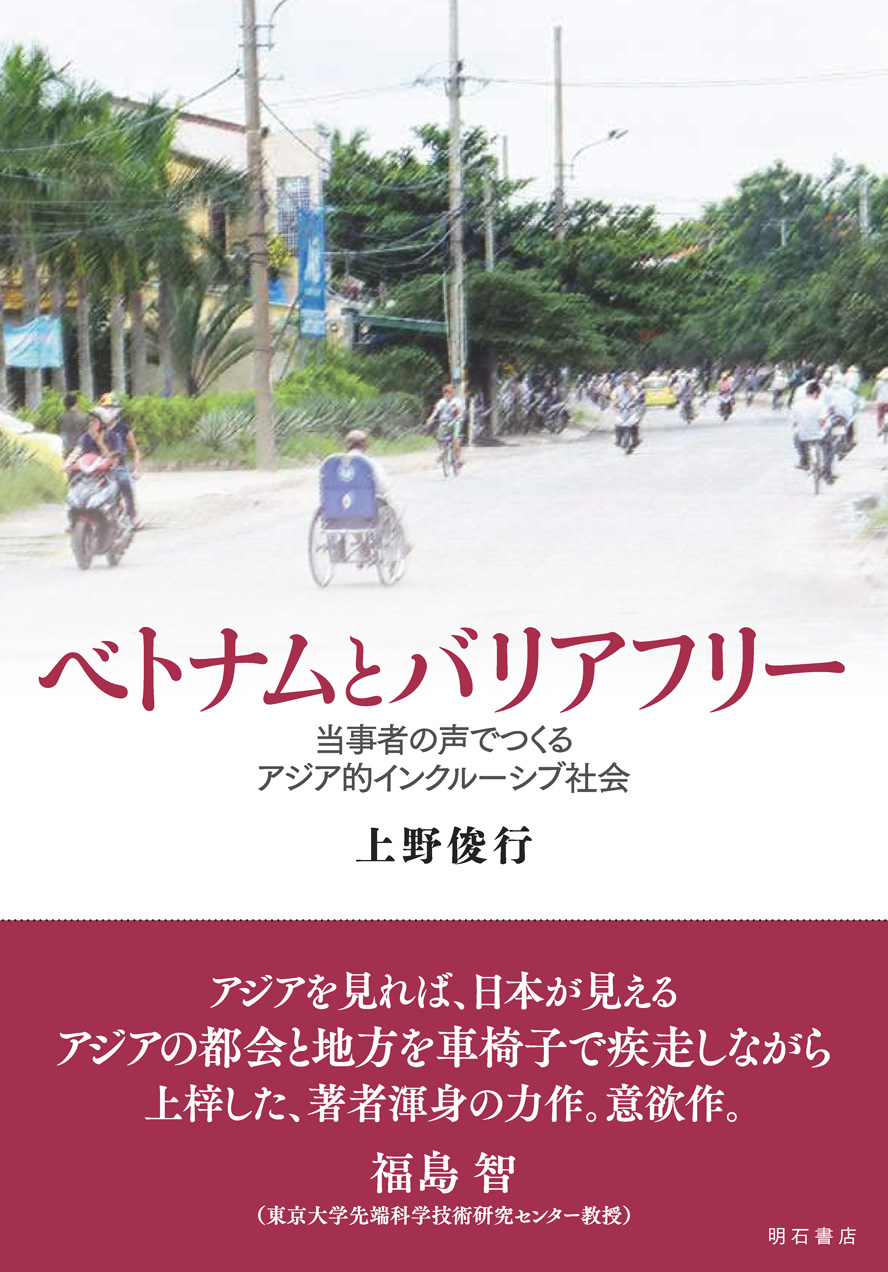
Title
Vietnam to Barrier Free (Vietnam and Barrier Free - Involving Participants in the Creation of Asian Inclusive Societies)
Size
320 pages, A5 format
Language
Japanese
Released
July 31, 2018
ISBN
9784750347059
Published by
Akashi Shoten
Book Info
See Book Availability at Library
Japanese Page
What kind of image do you have about Vietnam? We are all familiar with Vietnamese ethnic cuisine, “Made in Vietnam” sundries, and technical intern trainees from Vietnam. However, in 1975, when the phrase “barrier free” was brought to the world through the Report of the United Nations Expert Group Meeting on Barrier Free Design, the Vietnam War was just coming to a close, and the ruined country was a far cry from being “barrier free.” What about Japan, for some comparison? Even now, more than 40 years on from 1975, no one in Japan would boast of the country being barrier free. Looking at advanced barrier free regions, there are various processes to go through in the formation of a barrier free society.
When thinking about what is needed and what must be done to become barrier free, we have to begin by setting out what is meant be the term “barrier free.” When people hear the phrase “barrier free,” they generally think of tools such as elevators and ramps, and talk of a strong connection to economic power. Is that really true? Certainly, economic strength is an important factor in the “barrier free” discussion, but there is no shortage of examples where economic strength alone has failed to bring about a barrier free environment.
This book was written with an “area studies” perspective about barrier free environments in Vietnam, a region that started from the behind of the starting line in this respect. This study was considered absurd by many barrier free researchers in Japan, but in contrast to previous research that has come to equate economic might with barrier free environments, this research focuses on the work of local communities (which appear to have a significant influence on the formation of barrier free environments), turning attention to the actors involved while looking at the processes of how barrier free environments are formed.
Further, for this study I conducted empirical studies on barrier free environments with my own wheelchair in more than 20 cities in eight Asian regions, with many photographs gathered from such research included in this book. Factors contributing to Vietnam’s particular character—such as socialism, the Southeast Asia region, and being a motorcycle society—are explained so that even readers who may not consider themselves sufficiently knowledgeable about Vietnam can learn about the country. A form of being barrier transformation appropriate for Vietnam is considered through comparison with regions with similar characteristics: Beijing (China), Bangkok (Thailand), and Taipei (Taiwan).
This book demonstrated that “barrier free” is not a transient process, and does not end with the installation of ramps and elevators; economic strength is not all-important, and regional factors such as socio-cultural elements are also involved. This is not only about Vietnam, but takes a new position on the role that Japan should play in the development of barrier free environments in least developed countries, and reviews the environment in present-day Japan.
(Written by: UWANO Toshiyuki / December 14, 2020)
Related Info
The 13th Asia Pacific Research Prize (Asia Pacific Forum, Awaji Conference Japan August 2014)
https://www.hemri21.jp/awaji-conf/english/project/commendation/13th/awards/index.html
Title of Dissertation : “The Accessibility for People with Disabilities in the Civil Society of Vietnam: A Comparison with the Case of Public Transportation in Beijing, Bangkok, and Taipei”
https://www.hemri21.jp/awaji-conf/english/project/commendation/13th/awards/winner02.html



